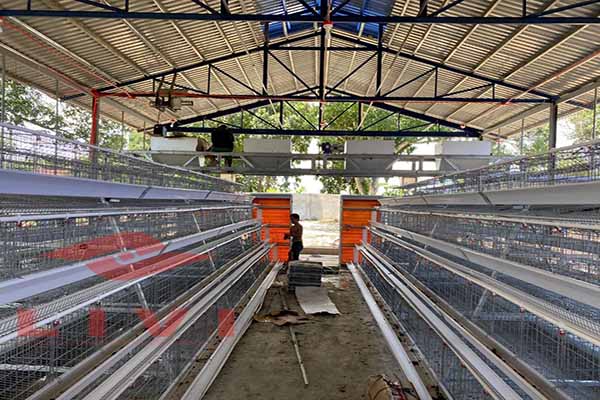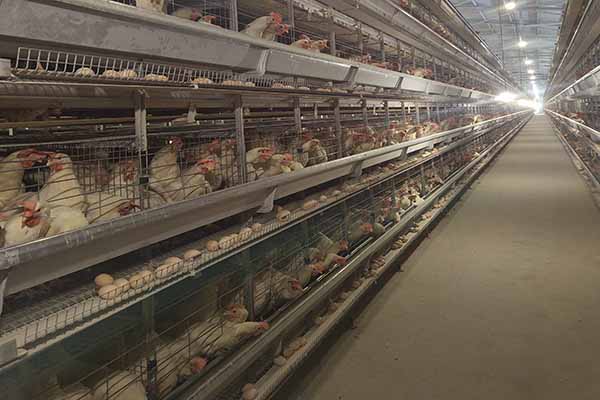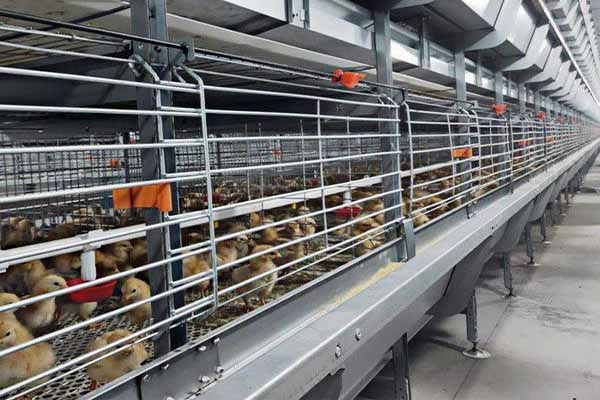Kenya Chicken Farm Automation: A Case Study on Automated Equipment and Its Impact
Time : 2025-06-29
As the global poultry industry continues to evolve, so does the technology and equipment used to streamline operations. One remarkable example is the case of a chicken farm in Kenya that has successfully implemented automated equipment to enhance its production process. This article will delve into the details of this case study, exploring the types of automated equipment used, their impact on the farm’s efficiency, and the lessons learned from the implementation process.
The Kenya Chicken Farm Scenario
The chicken farm in Kenya, which we will refer to as Kenya Farms Limited, is a medium-sized operation with a capacity of 50,000 birds. Like many farms in the region, Kenya Farms Limited faced several challenges, including labor shortages, increased feed costs, and a lack of advanced equipment to monitor and manage the farm’s operations effectively.

Introduction to Automated Equipment
Automated equipment refers to machinery and technology designed to perform tasks with minimal human intervention. In the poultry industry, such equipment can be used for various purposes, including feeding, watering, monitoring health, and collecting data.

Feeding Equipment
Feeding is a critical aspect of poultry farming, as it directly impacts growth rates and overall health. At Kenya Farms Limited, an automated feeding system  was implemented. This system includes a feed hopper, conveyors, and feed dispensers that distribute feed according to a predetermined schedule. This not only ensures that birds receive the correct amount of feed but also reduces labor costs associated with manual feeding.
was implemented. This system includes a feed hopper, conveyors, and feed dispensers that distribute feed according to a predetermined schedule. This not only ensures that birds receive the correct amount of feed but also reduces labor costs associated with manual feeding.
Watering Equipment
Water availability is another essential factor in poultry farming. Kenya Farms Limited installed automated watering systems, which include water lines and automatic drinkers. These systems ensure a constant supply of clean water to the birds, reducing the risk of dehydration and disease transmission.
Monitoring Equipment
Monitoring the health and well-being of birds is crucial for maintaining a healthy flock. At Kenya Farms Limited, automated monitoring systems were introduced to track vital signs, such as temperature, weight, and behavior. These systems alert farmers to potential health issues, allowing for timely interventions and minimizing the risk of mass outbreaks.
Data Collection and Analysis
The implementation of automated equipment also enabled Kenya Farms Limited to collect and analyze vast amounts of data. This data-driven approach allowed the farm to identify patterns and trends in bird health, growth, and production, leading to better decision-making and optimization of operations.
The Impact of Automated Equipment on Kenya Farms Limited
The introduction of automated equipment at Kenya Farms Limited had several positive impacts on the farm’s operations:
- Increased Efficiency: The automation of feeding, watering, and monitoring tasks significantly reduced the time and labor required to manage the farm. This allowed the farm’s staff to focus on other critical activities, such as maintenance and customer service.
- Improved Health and Welfare: The automated monitoring system enabled the farm to identify and address health issues quickly, leading to a healthier and more productive flock.
- Cost Reduction: By reducing the need for manual labor and minimizing the risk of disease outbreaks, the farm experienced cost savings in terms of feed, water, and healthcare.
- Enhanced Data-Driven Decision Making: The availability of real-time data allowed the farm to make informed decisions and optimize its operations for maximum efficiency and profitability.
The Challenges and Lessons Learned
While the implementation of automated equipment brought numerous benefits to Kenya Farms Limited, the process was not without its challenges. Some of the key challenges and lessons learned include:
- Training: Proper training was essential for the farm’s staff to operate and maintain the new equipment effectively. Investing in training and development programs was crucial to ensure the success of the automation process.
- Integration: Integrating the various automated systems required careful planning and coordination. Ensuring compatibility and smooth communication between systems was vital for the farm’s operations.
- Maintenance: Regular maintenance and repairs are necessary to keep the automated equipment running efficiently. Establishing a robust maintenance schedule and team was essential to prevent downtime and ensure ongoing productivity.
Conclusion
The case study of Kenya Farms Limited demonstrates the potential of automated equipment in transforming the poultry industry. By leveraging technology to streamline operations, the farm was able to achieve increased efficiency, improved health and welfare of the birds, and enhanced data-driven decision-making. While challenges are inevitable, the lessons learned from this case study can serve as a valuable resource for other farms considering automation.











